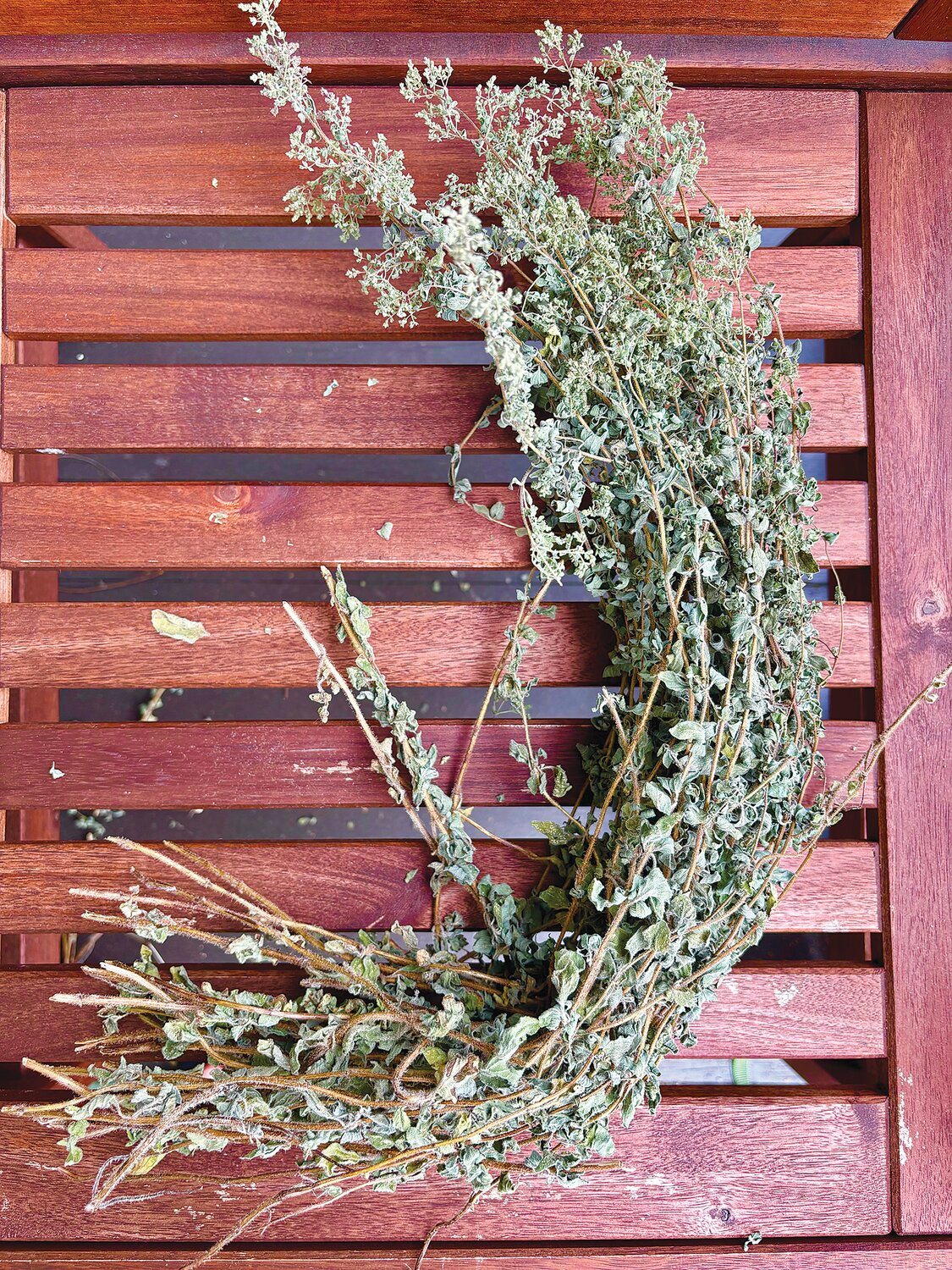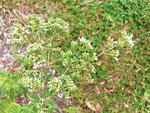- WEDNESDAY, AUGUST 14, 2024
Joy of the mountains
My garden is bursting with a favorite herb that has bloomed, been cut back, bloomed again, cut back, blooming again. I harvest its long stems when its white flowers have sprouted.
To dry herbs, …
This item is available in full to subscribers.
Please log in to continue |
Register to post eventsIf you'd like to post an event to our calendar, you can create a free account by clicking here. Note that free accounts do not have access to our subscriber-only content. |
Day pass subscribers
Are you a day pass subscriber who needs to log in? Click here to continue.
Joy of the mountains
My garden is bursting with a favorite herb that has bloomed, been cut back, bloomed again, cut back, blooming again. I harvest its long stems when its white flowers have sprouted.
To dry herbs, many theories and variations are debated. Herbalists have many practices that differentiate methods between cool herbs and warm herbs. For this one, I place stems on the wood slat bench that sits on my open-air porch. This no fuss “drying rack” offers plenty of airflow and just the right amount of morning sun and afternoon shade.
After a few days, their woody sticks and leaves are completely dry and ready to be bundled.
I select the longest stems first, layering according to height, with shorter stems last. All the flowered tips are aligned perfectly, forming the top of the bunch. I tie colored twine at the midway point of the bundle, making sure to include the shortest stems, and finish with a clean even cut at the very bottom.
Keeping the herb leaves on the stems retains its flavor longer and secures its essential oils, many which still reside in the stems. They are supremely better than the spice jars you buy in supermarkets. As a bonus, you can use the stripped stems as a flavor enhancer for grilling. Think of them as skewers or wood chips.
This wonderful distinctive herb is Oregano!
Its botanical name, Origanum, meaning “joy of the mountains,” was given by the ancient Greeks. It’s a hardy perennial that grows effortlessly in Zones 4 to 10, with more than 50 varieties to choose from. It can be found in Europe, North Africa, North America and Asia.
I’ve grown it in my Rhode Island garden for years and use it often. It delivers a lively kick to many dishes, and I love sharing these dried bundles with my cooking friends. Here are a few of my favorite types to grow.
• Greek Oregano heracleoticum: A true culinary herb of Italy and Greece with a spicy flavor profile. Compact in size with stems reaching 24” tall, crowned with tiny white flowers.
• Za’atar Oregano syriacum: The classic pungent type grows 8” tall with a spreading habit and showy white or pale pink flowers. A popular feature to Middle Eastern cuisine is za’atar sauce. It is so very easy to make by simply mixing crushed oregano leaves, sumac, thyme, toasted sesame seeds, salt and olive oil. Serve as a dip or spread along side a medley of yogurt, eggplant, cauliflower, feta, olives and pita bread.
• Oregano vulgare: Known as wild marjoram, with a mellower flavor than its Greek and Za’atar cousins, its flowers are purplish pink in color. This variety is shrubby, but tends to spread invasively by underground stems, like mint, so be sure to give it the right space.
• Origanum majorana: Sweet marjoram, plentiful in the hills of Portugal. Offers a milder taste and calmative benefit.
Most Origanum plants include thymol, an active ingredient with many medicinal uses. It’s been used as an antiseptic, appetite stimulant and can aid concentration and congestion.
During winter months I’m sure to keep my dried oregano on hand for the common cold or flu. When I have a stuffy nose I will do as my grandmother did, boil a small pot of water and add pinches of oregano, creating an inhaling infusion. I’ll lower my face close to the pot, covering my head with a towel, breathing in the steamy healing fumes — a simple holistic remedy to breathe again for several hours.
No more discussions of winter woes, it’s summah time! So perhaps you could share one of these easy dishes at your next backyard gathering.
n Several red peppers with stems and seeds removed, thick slices of onions, pitted green olives, capers, olive oil and salt. Bake for 45 minutes at 400 degrees and scatter with chopped dried oregano.
n Roast Yukon or Russet potatoes cut into chunks with onions, olive oil and kosher salt. Bake for 50 to 60 minutes at 400 degrees, turning only once for crispy potatoes. Before serving, dust generously with dried oregano.
Both of these dishes can be served straight from the oven or at room temperature. Delicious!
Summer time wouldn’t be the same without grilled pizzas. I sprinkle each pie with crushed oregano leaves harvested from our garden, giving it the perfect finishing touch!
Enjoy the many delightful culinary herbs that are featured in your garden. They are happy to be useful.
Note: Lavender, thyme, rosemary and savory can be harvested and dried the same.
Patricia Bailey is a horticulturist who retired the spade and picked up the pen. She shares her love of gardening, food and storytelling.
Other items that may interest you









